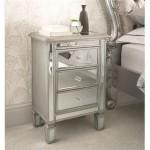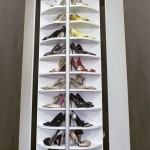How To Hang a Heavy Mirror Without Wall Studs
Hanging a heavy mirror can be a daunting task, especially when wall studs aren't readily available. Improper installation can lead to damage to both the mirror and the wall. This article outlines secure methods for hanging heavy mirrors on walls lacking stud support, focusing on safety and stability.
Essential Tools and Materials
Before beginning the hanging process, gather the necessary tools and materials. Appropriate preparation ensures a smoother and safer installation.
- Heavy-duty wall anchors (e.g., toggle bolts, molly bolts)
- Drill with appropriate drill bits
- Screwdriver (matching the chosen screws)
- Level
- Measuring tape
- Pencil
- Safety glasses
- Stud finder (optional, to verify stud absence)
- Mirror mounting hardware (D-rings, wire, or French cleats)
Choosing the Right Wall Anchors
Selecting the correct wall anchor is crucial for supporting the weight of the mirror. Different anchors offer varying weight capacities and are suitable for different wall types (drywall, plaster, concrete). Consider the mirror's weight and the wall material when making a selection.
- Toggle bolts: Ideal for hollow walls, providing a strong hold by spreading a wing behind the wall surface.
- Molly bolts: Another excellent option for hollow walls, expanding behind the wall to create a secure anchor point.
- Concrete anchors (e.g., sleeve anchors, wedge anchors): Necessary for concrete or brick walls, providing a robust and reliable fixing.
Preparing the Wall
Proper wall preparation is essential for a secure installation. This includes accurately marking the desired location and ensuring a clean surface for the anchors.
- Measure and mark the desired mirror position on the wall using a level and pencil.
- Mark the locations for the wall anchors based on the chosen mounting hardware. Ensure even spacing for balanced weight distribution.
- Clean the wall surface to remove any dust or debris that might interfere with anchor adhesion.
Installing the Wall Anchors
Careful installation of the wall anchors is critical for the mirror's stability. Follow the manufacturer's instructions for the specific anchor type being used.
- Drill pilot holes of the appropriate size for the chosen anchors.
- Insert the anchors into the drilled holes, ensuring they are flush with the wall surface.
- Tighten the anchors according to the manufacturer's instructions, avoiding over-tightening, which could damage the wall.
Attaching Mounting Hardware to the Mirror
The mounting hardware should be securely attached to the mirror’s frame. Ensure the hardware selected is rated to support the mirror's weight, and that it aligns with the wall anchors installed earlier.
- If using D-rings, measure and mark their placement on the back of the mirror frame, ensuring equal distance from the top and sides. Securely screw the D-rings into the frame.
- For wire hanging, attach the wire to the D-rings, allowing sufficient slack for it to hang on the wall anchors. Adjust wire tension for level hanging.
- If using a French cleat system, attach one part of the cleat to the back of the mirror and the other to the wall anchors ensuring level placement.
Hanging the Mirror
The final step is carefully hanging the mirror on the installed wall anchors. Ensure the mirror is securely in place before releasing it fully.
- Carefully lift the mirror and align the mounting hardware (D-rings, wire, or cleat) with the installed wall anchors.
- Once engaged, check the mirror’s levelness and adjust as needed. For wire-hung mirrors, ensure the wire is evenly distributed across the anchors.
- Gently release the mirror to ensure it is firmly supported by the anchors. Conduct a gentle pull test to confirm stability.
Safety Precautions
Safety should be a priority throughout the process. Following safety guidelines helps prevent accidents and ensures proper installation.
- Always wear safety glasses when drilling and working with wall anchors to protect your eyes from dust and debris.
- Enlist a helper for heavy mirrors to avoid strain and ensure safe handling during the hanging process.
- Double-check weight limits for all hardware and anchors to ensure they are appropriate for the mirror’s size and weight.
- If uncertain about any aspect of the installation, consult a professional handyman or contractor for assistance.
Alternative Hanging Solutions for Very Heavy Mirrors
For exceptionally heavy mirrors, consider additional support methods to further enhance safety and stability.
- J-bars: These metal brackets provide extra support by hooking over the wall anchors and securing the mirror from the bottom.
- Mirror adhesive: Specifically designed for mirrors, adhesive can supplement mechanical fasteners for added security.
- Backer boards: Installing a backer board onto the wall prior to hanging can provide a more substantial mounting surface, especially on weaker walls.

How To Hanging A Mirror Without Stud Heavy
How To Hang A 100 Pound Mirror On Drywall Quora

A Better Way To Hang Heavy Mirror Hanging Pictures

How To Hang A Large Or Heavy Mirror

How To Hang A Heavy Mirror

How To Hang Heavy Wall Decor Green With

How To Hang A Heavy Mirror Or Picture True Value
How To Hang Heavy Mirror Without Studs Centered Diy Home Improvement Forum

How To Install A Mirror Without Frame Merrypad

How To Hang A 31kg Mirror On Wall With Bunnings Work Community








